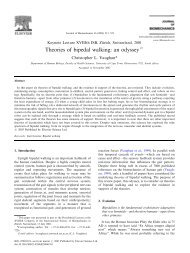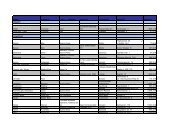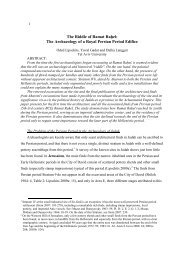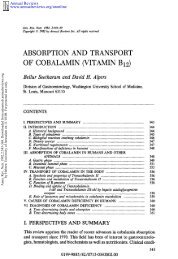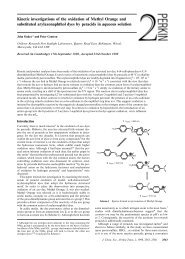The Cemetery of Azor and Early Iron Age Burial Practices
The Cemetery of Azor and Early Iron Age Burial Practices
The Cemetery of Azor and Early Iron Age Burial Practices
Create successful ePaper yourself
Turn your PDF publications into a flip-book with our unique Google optimized e-Paper software.
Ben-Shlomo<strong>The</strong> <strong>Cemetery</strong> <strong>of</strong> <strong>Azor</strong>Figure 6Pit <strong>Burial</strong> D80, <strong>Azor</strong>example <strong>of</strong> a richly furnished pit burial <strong>of</strong> a child.Another pit burial (D58) contained an adult female<strong>and</strong> a child (mother <strong>and</strong> child?). <strong>The</strong> bones werefound near fragments <strong>of</strong> a jar. It seems the jar wasrelated to the pit burial <strong>and</strong> was not a burial vessel inthis case. Several bowls <strong>and</strong> jugs were also found inthe burial as well as four bronze bracelets, recoveredfrom the h<strong>and</strong> <strong>of</strong> the female body.<strong>Burial</strong> D80 contained a complete skeleton <strong>of</strong> amale in articulation (reported as a ‘brachicephalic’skull), in a supine position with the head pointed tothe west (Fig. 6). <strong>The</strong> legs continued into the easternbalk <strong>and</strong> were possibly bent. A complete jar was laidhorizontally parallel to the left <strong>of</strong> the body with itsneck towards the legs. Other pottery vessels from theburial include fragments <strong>of</strong> a bell-shaped bowl, anopen bowl <strong>and</strong> Philistine jugs. This burial is arelatively well preserved example <strong>of</strong> a pit grave,including one individual with a complete jar laidbeside it together with other goods. This form <strong>of</strong>burial seems to be typical <strong>of</strong> a number <strong>of</strong> <strong>Iron</strong> <strong>Age</strong>tombs in Area D (as <strong>Burial</strong>s D57 <strong>and</strong> D91A), <strong>and</strong> canbe compared to LBII burials from Tell Abu Hawam(Anati 1959, 92, fig. 3), Tell es-Sai’diyeh (Pritchard1980, 17–19, Tombs 105 upper, 107, 110, 119, 136;Tubb 1998, fig. 56) <strong>and</strong> anthropoid burials from Deirel-Balah (Dothan 1979, Tombs 114, 116), whereCanaanite storage jars were placed near the heads <strong>of</strong>the c<strong>of</strong>fins, possibly marking the grave above ground(Bloch-Smith 1992a, 76). <strong>Burial</strong> D15 contained arelatively rich assemblage <strong>of</strong> goods, probably locatednear the skull. Tha burial included two Philistine bellshapekraters, a jar neck <strong>and</strong> one jug. Other finds area square stone bowl, <strong>and</strong> metal objectr including abronze mirror (Fig. 21:3), a bronze pin <strong>and</strong> a silverearring <strong>and</strong> several beads.<strong>Iron</strong> IIA pit burials (Phase III) were mostlyconcentrated in the northern part <strong>of</strong> the area <strong>and</strong>included at least six burials. <strong>Burial</strong> D5 includes atleast three Cypro-Phgenician juglets (one near theskull), an amulet, a scarab, a bracelet <strong>and</strong> beads.<strong>Burial</strong> D14 has two White Painted Cypriote jugletsnear the skull, two chalices, a bronze bracelet <strong>and</strong> ascarab. <strong>Burial</strong> D33 included a complete articulatedskeleton <strong>of</strong> a twenty-year-old female (Ferembach1961, 86–87, fig. 3) in a supine position with the headturned to the right side (Dothan 1961d, 82, fig. 3)pointing to the west. <strong>The</strong> nearby <strong>Burial</strong> D35 waspoorly preserved but yielded several artefacts as twored-slipped juglets, two ‘black juglets’ (Fig. 19:8), at34 Levant 2008 VOL 40 NO 1



